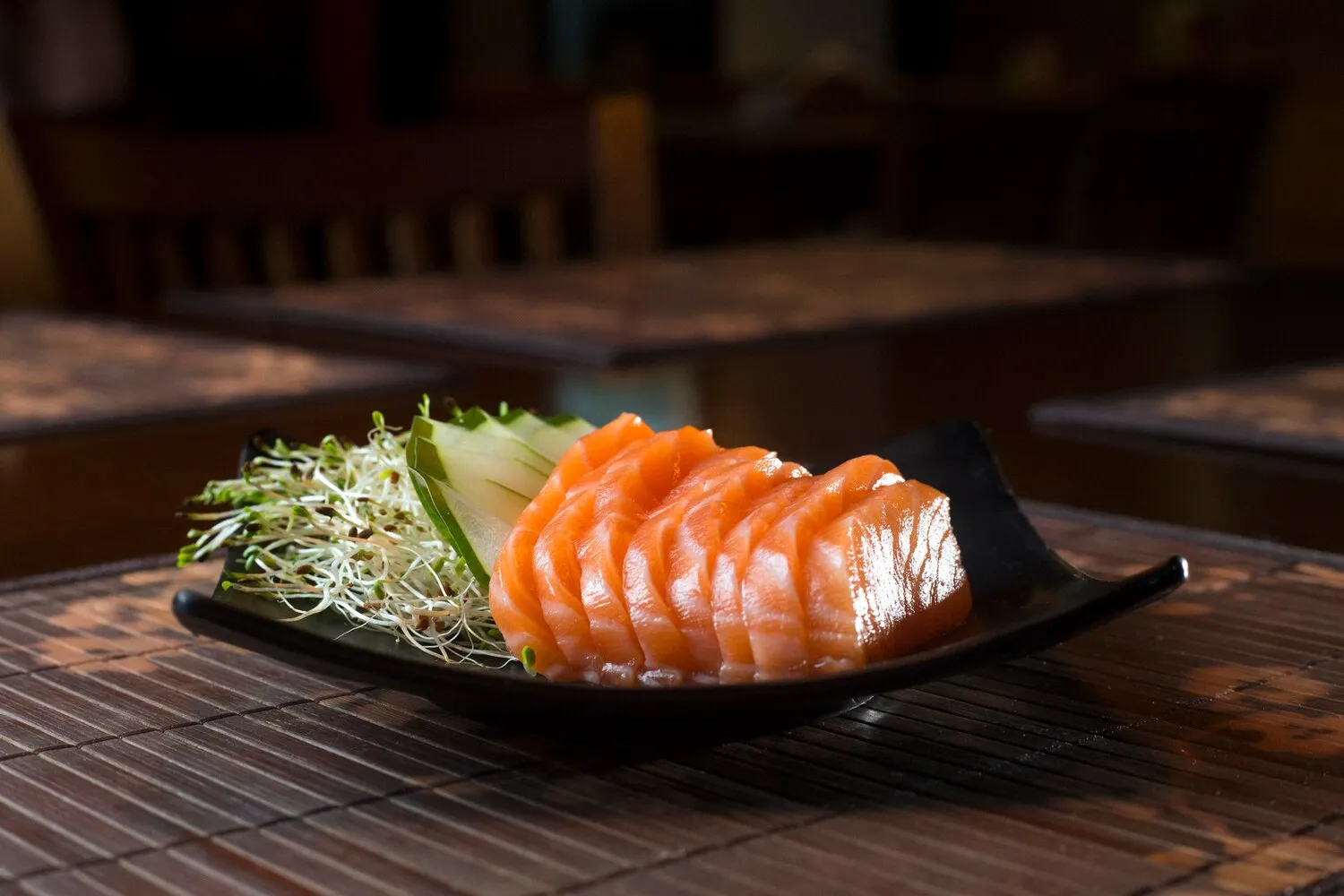
Sashimi Salmão
Salmon sashimi.
Nutrition Facts
* The % Daily Value (DV) tells you how much a nutrient in a serving of food contributes to a daily diet. 2,000 calories a day is used for general nutrition advice.
Sashimi, meaning 'pierced body,' has ancient roots in Japan, evolving from a necessity to preserve fish using icehouses to a refined culinary art form. Initially, it distinguished between raw fish and other preparations, serving as a test of skill for chefs and an appreciation of the fish's freshness.
Sashimi is deeply embedded in Japanese culture, representing respect for nature's bounty and the skill of the chef. It's often served on special occasions and reflects values of simplicity, purity, and aesthetics.
Presentation
The presentation of sashimi is highly valued, with careful attention paid to the arrangement of the slices and the accompanying garnishes. Aesthetics are considered integral to the dining experience.
Freshness and Quality
Sashimi emphasizes the importance of extremely fresh and high-quality ingredients. Chefs are highly skilled at selecting and preparing the fish to showcase its optimal flavor and texture.
Etiquette
There are specific etiquette rules associated with eating sashimi, such as using chopsticks to pick up the slices, dipping sparingly in soy sauce, and using ginger as a palate cleanser.
Sashimi Salmão offers a clean, delicate, and buttery flavor profile, primarily defined by the high-quality salmon used. The subtle sweetness of the salmon is often complemented by umami notes.
The main flavor component is the fresh salmon, which has a naturally rich and buttery taste. Soy sauce (shoyu) provides saltiness and umami depth. Wasabi contributes a pungent spiciness that cleanses the palate and enhances the fish's flavor. Pickled ginger (gari) serves as a palate cleanser between bites, offering a sweet and slightly spicy counterpoint. A squeeze of lemon or lime can add a touch of acidity to brighten the overall taste.
Sourcing
Always source your salmon from a reputable fishmonger to ensure freshness and safety. Look for salmon that is vibrant in color, firm to the touch, and has a fresh, clean smell.
Knife Skills
Proper knife skills are essential for slicing sashimi. A very sharp knife and a smooth, fluid motion are needed to create clean, even slices without tearing the fish.
Serving Temperature
Serve sashimi chilled, but not ice-cold. This allows the flavors of the salmon to fully develop. Keep it refrigerated until just before serving.
Soy Sauce Usage
Avoid drowning the sashimi in soy sauce. The goal is to enhance the flavor, not overwhelm it. Dip lightly, or brush the soy sauce onto the fish.
Explore additional Sushi dishes and restaurants
Explore SushiDiscover top dining spots and culinary experiences in Maringá.
Explore MaringáLearn more about the food culture, restaurant scene, and culinary heritage of Brazil.
Explore Brazil